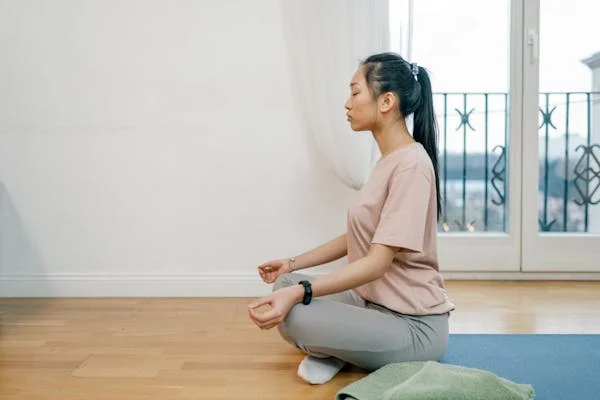Mizukando is gaining attention globally, but what is it exactly? From its cultural roots to its modern applications, this article unpacks everything you need to know about Mizukando. With a focus on simplicity and clarity, let’s explore this topic while ensuring user-friendly, well-researched content.
What Is Mizukando?
Mizukando originates from Japanese traditions, reflecting a blend of mindfulness, simplicity, and functionality. While the term has evolved, its core remains deeply rooted in a balance between natural elements and human activities. It can apply to practices in design, lifestyle, and even environmental harmony.
Key Features of Mizukando
Understanding Mizukando requires recognizing its foundational principles. Below are the main features that define it:
- Simplicity in Design: Emphasis on uncluttered and functional aesthetics.
- Nature Integration: Incorporating natural elements into spaces, promoting balance.
- Mindful Practices: Encourages slow living and mindful decisions in daily routines.
Why Mizukando Matters Today
Environmental Harmony
Mizukando promotes eco-consciousness by emphasizing sustainable materials and practices.
Wellness and Mindfulness
Living with Mizukando principles fosters peace, focus, and mental clarity.
Aesthetic Appeal
Its focus on natural beauty and simplicity enhances modern interiors and lifestyles.
Practical Applications of Mizukando
Home Design
Incorporating Mizukando into homes can improve both functionality and appearance. Key ideas include:
- Using natural materials like wood, stone, and bamboo.
- Arranging furniture for open, breathable spaces.
- Adding greenery to interiors.
Workplace Integration
Mizukando principles can enhance productivity in offices by:
- Creating uncluttered workstations.
- Ensuring good ventilation and natural lighting.
- Using calming color palettes.
Personal Lifestyles
Adopting a Mizukando lifestyle means focusing on essentials and practicing mindfulness. This could involve:
- Decluttering living spaces.
- Incorporating daily meditation or mindful exercises.
- Choosing quality over quantity in purchases.
Table: Core Elements of Mizukando
| Element | Description | Examples |
|---|---|---|
| Simplicity | Focus on minimalism and functionality | Minimalist decor, neutral color schemes |
| Nature Integration | Bringing the outdoors inside | Indoor plants, natural light, wooden furniture |
| Mindfulness | Encouraging conscious living | Meditation, sustainable habits |
| Eco-Consciousness | Supporting the environment | Recycled materials, energy-efficient lighting |
How to Incorporate Mizukando in Everyday Life
- Simplify Your Space: Start by decluttering your home or workspace.
- Use Natural Elements: Incorporate wood, plants, and soft lighting.
- Practice Mindfulness: Dedicate time daily for reflection or meditation.
- Choose Sustainability: Opt for reusable products and reduce waste.
- Create Balance: Ensure all aspects of your life align with harmony and purpose.
Conclusion
Mizukando offers a harmonious approach to living, focusing on simplicity, mindfulness, and sustainability. By incorporating its principles, you can enhance your home, workspace, and overall well-being. Are you ready to embrace the peaceful art of Mizukando in your life.
Frequently Asked Questions About Mizukando
Q1: What is Mizukando?
Mizukand is a concept rooted in Japanese traditions that emphasizes simplicity, mindfulness, and harmony with nature. It applies to various aspects of life, including design, lifestyle, and sustainable living.
Q2: How can I incorporate Mizukando into my home?
To incorporate Mizukand into your home:
- Use natural materials like wood and stone.
- Declutter spaces for a clean, minimalist look.
- Add plants or greenery to promote harmony with nature.
Q3: Is Mizukando only about design?
No, Mizukand is not limited to design. It is also a lifestyle philosophy that encourages mindful living, sustainability, and balance in all areas of life, including mental and physical well-being.
Q4: Is Mizukando expensive to adopt?
Not necessarily. Mizukand encourages prioritizing quality over quantity and making mindful choices. You can start small by decluttering, using natural materials, and incorporating affordable sustainable practices.
Q5: Can Mizukando be applied to workplaces?
Yes, Mizukand principles work well in workplaces by:
- Creating open, clutter-free spaces.
- Using natural lighting and ergonomic furniture.
- Encouraging mindful work habits for better productivity.
Q6: Is Mizukando suitable for modern lifestyles?
Absolutely! Mizukand adapts well to modern lifestyles by promoting sustainability, reducing stress through mindfulness, and creating aesthetically pleasing environments.





